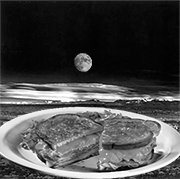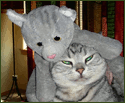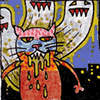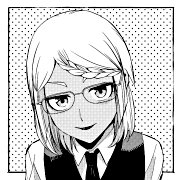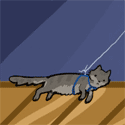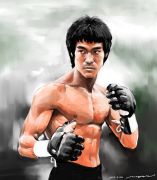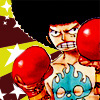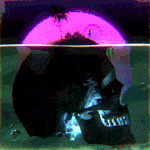|
huhu posted:Does anyone know of a photo photo stat app? Like it could answer questions like "what's my most used focal length over time"? I found an app from 2013 but it's dead and only works on mac. If you know any programming at all this could be a fun little python script to write assuming your photos are all local.
|
|
|
|

|
| # ? May 19, 2024 19:10 |
|
Corla Plankun posted:If you know any programming at all this could be a fun little python script to write assuming your photos are all local. you can use image magick to read the exif code:code:
|
|
|
|
Corla Plankun posted:If you know any programming at all this could be a fun little python script to write assuming your photos are all local. 😅 was actually going to build one myself if nothing was shared here.
|
|
|
|
Can someone recommend some mainstream helpful textbooks about photography and maybe visual art in general? I can't seem to take any good photos.
|
|
|
Thoren posted:Can someone recommend some mainstream helpful textbooks about photography and maybe visual art in general? The Photographer’s Eye really helped me and I still return to it occasionally. Not that I can take any good photos but vOv My mom was a reporter for awhile and she had a bunch of old photography books that I’ve got now and they’re less complete than The Photographer’s Eye but I believe they’ve all been helpful in their own way. I’d recommend looking through a list of books on the genre you’re trying out and just dive into one book that looks cool to you.
|
|
|
|
|
The Art of Photography is insanely good too (from Bruce Barmbaum, not the youtuber Ted Forbes). It gets into post-processing stuff which is kinda dated and not relevant, but the first half of the book is super useful for composition and thinking about light.
|
|
|
|
Thanks guys. Hopefully I can take a few good photos this year.
|
|
|
|
Thoren posted:Can someone recommend some mainstream helpful textbooks about photography and maybe visual art in general? you should look at photo books instead
|
|
|
|
Get the correct photographers eye book, the one by szarkowski and not michael freeman
|
|
|
|
Wild EEPROM posted:Get the correct photographers eye book, the one by szarkowski and not michael freeman If you hadn't told me this I would have never known. Thanks.
|
|
|
|
I didn’t like the reviews for The Art of Photography so I went with Creative Nature & Outdoor Photography instead.
|
|
|
|
|
absolutely stunning portfolio from the author of that one
|
|
|
|
huhu posted:Does anyone know of a photo photo stat app? Like it could answer questions like "what's my most used focal length over time"? I found an app from 2013 but it's dead and only works on mac. There is a "write me a tiny app" thread, someone might take you up on this challenge. Maybe structure it in the form of "how can I extract and dump all the exif data for all the photos in a directory to csv format?" And then dissect the data manually in excel or Google sheets later
|
|
|
|
Hadlock posted:There is a "write me a tiny app" thread, someone might take you up on this challenge. Maybe structure it in the form of "how can I extract and dump all the exif data for all the photos in a directory to csv format?" And then dissect the data manually in excel or Google sheets later exiftool has csv support, 90% of the way there
|
|
|
|
bellows lugosi posted:absolutely stunning portfolio from the author of that one Lmao these are super terrible
|
|
|
|
Well if one wants that empty nest photographer aesthetic might as well learn from the best.
|
|
|
|
Thoren posted:Can someone recommend some mainstream helpful textbooks about photography and maybe visual art in general? Understanding Exposure is pretty good because it's laser-focused on making you take correctly-exposed photos (a common thing newbies and even intermediate photographers struggle with). It's made for digital photography in mind and while imaging tech has vastly improved over the years it's still aged very well
|
|
|
|
Wild EEPROM posted:Get the correct photographers eye book, the one by szarkowski and not michael freeman Wow I suppose this explains why I was a bit underwhelmed by this book after seeing all the praise for it online
|
|
|
|
Interaction of color by Josef albers. The book that most modern artists learned color theory from. Read it.
|
|
|
|
bobmarleysghost posted:Lmao these are super terrible
|
|
|
|
Lily Catts posted:Understanding Exposure is pretty good because it's laser-focused on making you take correctly-exposed photos (a common thing newbies and even intermediate photographers struggle with). It's made for digital photography in mind and while imaging tech has vastly improved over the years it's still aged very well I’d argue that adams’ book 2 ‘the negative’ is equally worthwhile. The zone system perfectly applies to digital photography, only highlights are the challenge, not shadows. Really adams’ three books (the camera, the negative, the print) are all valuable.
|
|
|
bellows lugosi posted:absolutely stunning portfolio from the author of that one Thank you for saying the punchline
|
|
|
|
|
bellows lugosi posted:absolutely stunning portfolio from the author of that one Windows log in screen rear end photos
|
|
|
|
tuyop posted:The Photographer’s Eye really helped me and I still return to it occasionally. Not that I can take any good photos but vOv There are 2 books called this iirc, make sure to get the correct (good) one. I don't remember which one i have but i do remember it was the wrong one. EDIT: I see someone already gave this info
|
|
|
|
Wild EEPROM posted:Get the correct photographers eye book, the one by szarkowski and not michael freeman i bought the wrong one like 15 years ago and just now found out
|
|
|
Ineptitude posted:There are 2 books called this iirc, make sure to get the correct (good) one. Yeah I wonder which one I have, it’s been in a box cause I’m moving forever.
|
|
|
|
|
Thoren posted:Can someone recommend some mainstream helpful textbooks about photography and maybe visual art in general? The Nature of Photographs: A Primer The Photographer's Eye Robert Adams: Why People Photograph: Selected Essays and Reviews Todd Hido on Landscapes, Interiors, and the Nude: The Photography Workshop Series Larry Fink on Composition and Improvisation: The Photography Workshop Series Examples: The Making of 40 Photographs On Being a Photographer: A Practical Guide How to Read a Photograph: Lessons from Master Photographers Tod Papageorge: Core Curriculum: Writings on Photography John Berger: Understanding a Photograph The Gerry Badger: Pleasures of Good Photographs Looking In: Robert Frank's The Americans: Expanded Edition New Topographics The Painted Word (critical look at the "art world")
|
|
|
|
Thanks ya'll. I'm going to start studying profusely.
|
|
|
|
Don't forget to just look at photos too. Pouring over the work of your favorites or critiquing ones you don't like is a great way to inform your style while out on a walk.
|
|
|
|
I really enjoyed Understanding Exposure (the flash chapter notwithstanding), which helped with being more confident in manual mode and general theory around a “correct” exposure vs just yoloing dials until the camera says you’re good. Speakinawhich: Any #lifehacks on quickly getting the right custom white balance indoors? This year I’m endeavoring to ween myself from AWB. I have all lights which are technically “warm white” at (iirc) 2700-3000k, but when I either plug a specific value in that range into my X-T* or select the “Fluorescent Light - 2” setting I usually get a pretty wonky result from the LCD; sometimes too warm, sometimes too cold. In fact, AWB tends to give the most consistently close result. I will sometimes use a gray card, but find it annoying to have to locate and set the balance every time I pull out the camera. I can fix it in post, but hoping there’s a speedier way to get “close enough” in camera.
|
|
|
|
Can you shoot and process RAW? Then you can worry about white balance entirely in post - correct it once and apply to all photos in that lighting. Put a grey card in one picture of a shoot if you care to, or just adjust by eye.
|
|
|
|
My camera is permanently on cloudy white balance because of that. It's a 2 second fix in LR.
|
|
|
|
Thoren posted:Thanks ya'll. For a completely different note, I actually like this guy's guide on reddit, which is quite comprehensive: Finding Great Photography without Instagram which helps you with free inspiration for better technique and inspiration. I started collecting photobooks after this from some of my heroes like Robert Frank and found that to be a great way to learn by copying. Some of the ad agencies online release full collections of high-res photos from recent projects and they're both free and great. I hope it helps, of course nothing replaces instruction but I have the attention of a gnat and no free time to enroll properly
|
|
|
|
The other thing about white balance is that sometimes there's no objectively "correct" setting. You'll frequently have light sources with different color temperatures falling in your photo, and you'll also have lights catching color casts from things they're shining through or bouncing off of. Generally, if I'm photographing people, I aim to make skin tones look right, and let the other parts of the image fall where they may. Or, I might use a mask to correct different parts separately, too. Sometimes you'll also get multiple colors of light on the same person, and you just have to find a setting that looks "right".
|
|
|
|
big scary monsters posted:Can you shoot and process RAW? Then you can worry about white balance entirely in post - correct it once and apply to all photos in that lighting. Put a grey card in one picture of a shoot if you care to, or just adjust by eye. Yeah. I shoot raw+jpeg and frequently adjust in Lr. But my goal is to get as close to “correct” out of the camera as I can get with reasonable efficiency.
|
|
|
|
quote:The Photographer’s Eye
|
|
|
|
adnam posted:For a completely different note, I actually like this guy's guide on reddit, which is quite comprehensive: Finding Great Photography without Instagram which helps you with free inspiration for better technique and inspiration. I started collecting photobooks after this from some of my heroes like Robert Frank and found that to be a great way to learn by copying. Some of the ad agencies online release full collections of high-res photos from recent projects and they're both free and great. I hope it helps, of course nothing replaces instruction but I have the attention of a gnat and no free time to enroll properly Thanks. This should be useful. I actually just looked through "The Americans" for the first time recently. The photos are novel as a window into American history, and they certainly work as a collection, but I don't feel as consistently 'wowed' as I do with some other photographers. Would you mind sharing what makes him one of your heroes?
|
|
|
|
from American Photography and the American Dream by james guimond, via american suburb xquote:All the 1950’s signs of democracy, prosperity, popular culture, and success are in The Americans – the flags, cars, jukeboxes, cowboys, teenagers on dates, motorcycles, television sets, political conventions, movie and television actresses. Seen in “real life,” however, through the lens of Frank’s Leica, without the flattering techniques and selectivity of the picture magazines, these icons of the American national identity all seem disappointing or debased. Cowboys in the mass media during the 1950’s, for example, were still rugged, masterful young men whether they were performing in Hollywood movies, posing at rodeos for Life, or working on ranches for Look’s photographers. In The Americans, however, one cowboy stands by himself, a lonely figure under a glaring fluorescent light in a bar in Gallup, New Mexico; a rodeo cowboy leans against a trash can on a littered street in New York City; and another rodeo cowboy, seen relatively close up in Detroit, turns out to be an unattractive young man with a bad complexion, who is smoking an ugly cigar.
|
|
|
|
Frank's photos say something. They stick with you years after looking at them.
|
|
|
|

|
| # ? May 19, 2024 19:10 |
|
Got Fred Herzog: Modern Color for Christmas, and it's absolutely amazing. The best inspiration for me is just paging through photobooks and getting a feel for what makes a particular photo so good. It helps your muscle memory for framing, I've found.
|
|
|











